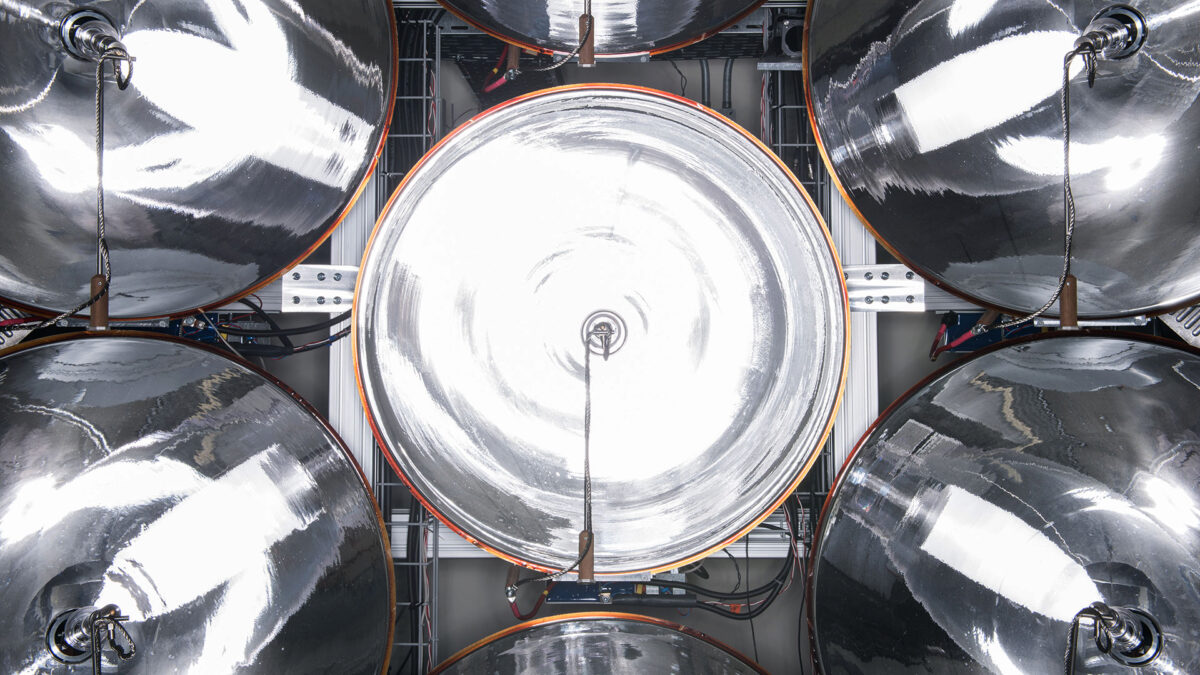High-flux solar simulators (HFSS) are used to develop and test solar receivers, reactors, and other technologies requiring high temperatures and radiative fluxes at a lab scale. A HFSS provides radiative conditions like those at concentrating solar facilities, but in a controlled laboratory environment, without local weather variation-caused uncertainties and time-of-day testing limitations. This means researchers can perform faster, more repeatable experiments to optimize reactor efficiencies and study reaction behaviors at a detailed level.
Solar FTL High Flux Solar Simulator
Georgia Tech’s HFSS is an array of seven 6 kWe lamps. The lamps are mounted in truncated ellipsoidal reflectors and positioned to focus light to a single focal point. Xenon short arc lamps were selected for the HFSS, as they closely match the spectral profile of sunlight reaching the earth’s surface and can rapidly be brought “on-sun” to provide high-intensity radiation to solar reactors and receivers.
The HFSS delivers light at an average concentration nearly 5000 times that of the sun, and a peak concentration of nearly 7000x. This light, focused to a 40 mm diameter circular area in the focal plane, can transfer a power exceeding 6 kWt to a solar reactor or receiver. Thus, the HFSS can heat materials to temperatures well above 1000 °C in a matter of seconds.
